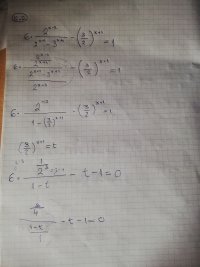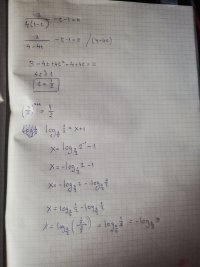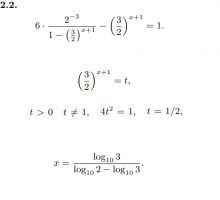So this problem is very confusing to me. The first two pictures show how I tried to solve it, but even for that I used the solution as a guide. I would have never gotten the idea to use t like they did. In the end I also brought in logarithms, because they did (3rd picture), however, I still did not get the answer they did and it makes no sense to me. I feel like my solution with logarithms is a lot simpler... How did they get what they got? Is there another way to solve this? I don't think If I got this problem on an exam I would get the idea to use t like they did...






